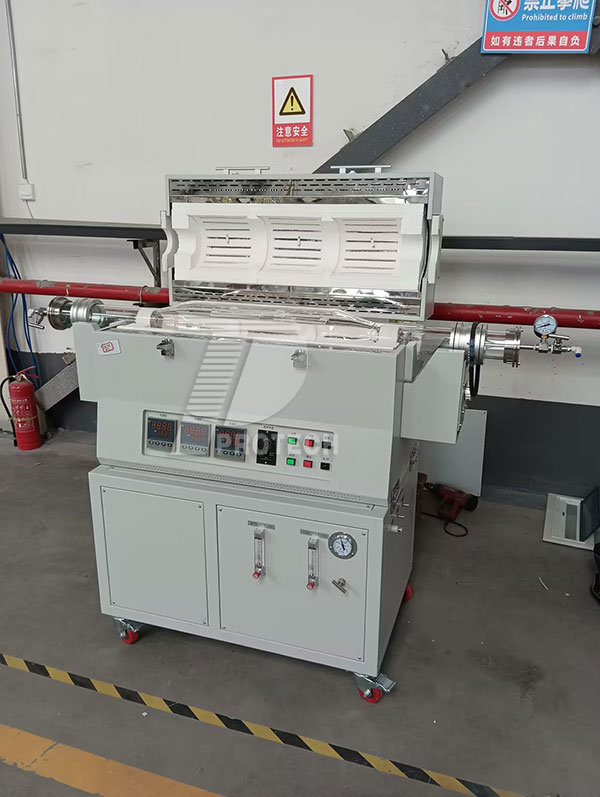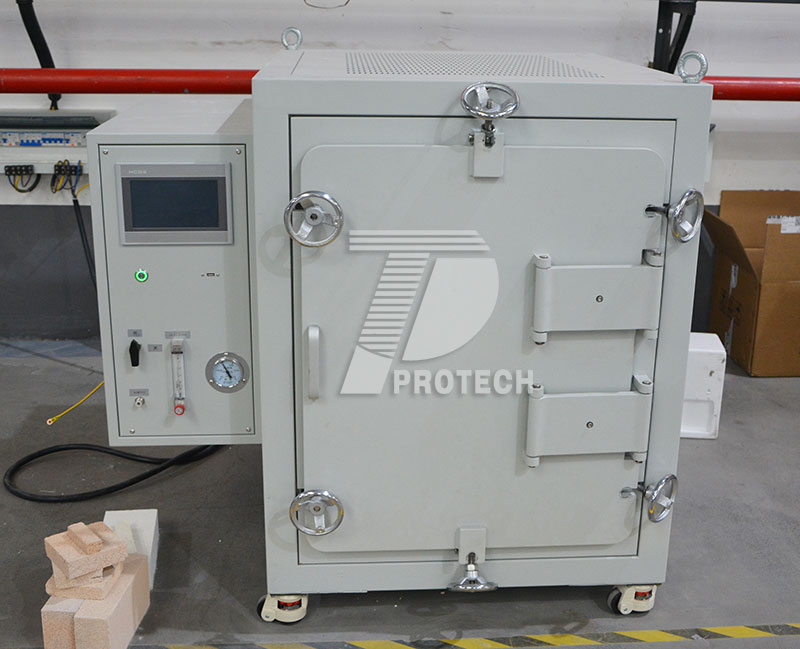


NEWS
Choosing a heat treatment electric furnace in a laboratory environment requires a comprehensive evaluation from five dimensions: experimental requirements, furnace structure, core component performance, safety and intelligent design, brand and after-sales service. Let's take a detailed look below!

A commonly used experimental multi zone tube furnace (click on the image to view product details)
1. Clarify experimental requirements and determine core parameters
temperature range
Select the maximum temperature of the equipment based on the experimental maximum temperature requirement, for example:
The material ashing experiment (≤ 1000 ℃) can choose a regular muffle furnace;
Ceramic sintering (1600-1800 ℃) requires the use of a tube furnace or atmosphere furnace heated with silicon molybdenum rods;
Metal heat treatment (such as annealing) requires the selection of a vacuum furnace based on the material of the workpiece.
Key indicators: The maximum operating temperature of the equipment should be 100-200 ℃ higher than the experimental requirements to avoid component aging caused by long-term full load operation.
Sample characteristics
Size and batch size:
For small-scale fine experiments (such as nanomaterial preparation), choose a tube furnace (quartz tube inner diameter 20-100mm);
For large-scale processing (such as metal annealing), choose a box type muffle furnace (furnace volume ≥ 50L).
Atmosphere requirements:
Inert gas protection (such as CVD deposition) requires the selection of tube furnaces or atmosphere furnaces with gas pipelines;
Gas flow meters and exhaust gas treatment devices are required for oxidation/reduction environment experiments.
precision
Select PID controller for ordinary experiments (such as ash content determination), with a temperature control error of ≤± 2 ℃;
Precision experiments (such as crystal growth) require the use of an intelligent temperature control system that supports multi-stage heating programs with an error of ± 1 ℃.
2. Select furnace structure based on experimental type
Box type muffle furnace: Conventional high-temperature treatment (ashing, annealing, ceramic sintering), simple structure, convenient operation, low cost, but not suitable for precision experiments.
Tube furnace: Atmosphere control experiments (CVD, catalyst research, nanomaterial preparation), good temperature uniformity (± 1 ℃), can pass specific gases, suitable for small batch samples.
Atmosphere furnace: Vacuum/high-pressure experiment (metal heat treatment, special gas reaction): can accurately control the atmosphere (vacuum degree ≤ 10 ⁻ ³ Pa), supports vacuum.
Lift furnace: fast heat treatment (RTP, quenching), fast heating rate (≥ 50 ℃/min), supports vertical lifting of samples.
3. Performance evaluation of core components
heating element
Resistance wire: suitable for temperatures ≤ 1200 ℃, low cost, but prone to oxidation and deformation, short lifespan (about 2000 hours);
Silicon carbon rod: suitable for temperatures between 1200-1600 ℃, with strong oxidation resistance and long lifespan (about 5000 hours), but the resistance value increases with temperature rise;
Silicon molybdenum rod: suitable for temperatures between 1600-1800 ℃, with good high-temperature stability, but prone to brittleness at low temperatures (<800 ℃), requiring a segmented heating program.
Temperature measuring element
N-type thermocouple: suitable for temperatures ≤ 1200 ℃, low cost, easy to maintain;
S-type thermocouple: suitable for temperatures ≤ 1600 ℃, slightly higher price, but corrosion-resistant;
B-type thermocouple: suitable for temperatures ≤ 1800 ℃, requires the use of a high-temperature protective sleeve.
4. Security and Intelligent Design
Safety protection
Essential functions: Over temperature alarm, leakage protection, door lock interlock device;
Optional functions: gas leak detection, emergency stop button, furnace temperature monitoring.
Intelligent functions
Program control: supports programming of multi-stage heating/insulation/cooling curves, reducing manual intervention;
Remote monitoring: Real time viewing of temperature curves and adjustment of parameters through APP or PC;
Data recording: Automatically store experimental data and support export analysis.
5. Brand and after-sales service
Brand Choice
Avoid choosing: unqualified small factory products (thin shell, temperature control, no after-sales service).
after-sale service
Warranty period: at least 1 year;
Response speed: Require on-site maintenance within 48 hours;
Accessory supply: Confirm sufficient inventory of vulnerable parts such as heating elements and thermocouples.
6. Recommended configuration plan example (for reference only, can be customized according to actual needs)
Material ashing/annealing: Box type muffle furnace, resistance wire heating, alumina fiber furnace, PID controller, over temperature protection.
CVD deposition/nanomaterials: tube furnace, silicon carbide rod heating, quartz tube, intelligent temperature control system, gas flow meter.
Metal heat treatment: atmosphere furnace, silicon molybdenum rod heating, vacuum pump, gas leak detection.
Workpiece annealing: Vacuum furnace with vacuum pump, water cooler, gas leak detection, over temperature protection, emergency stop button, etc.

Experimental atmosphere furnace (click on the image to view product details)
In general, when choosing a laboratory heat treatment electric furnace, attention should be paid to the above key points. Specific requirements can be communicated with relevant technical personnel to determine the experimental parameters you want, so as to customize an experimental electric furnace that is more suitable for your needs!Click to learn more experimental electric furnaces! Or click on online customer service to learn more about product information!
Leave A Message